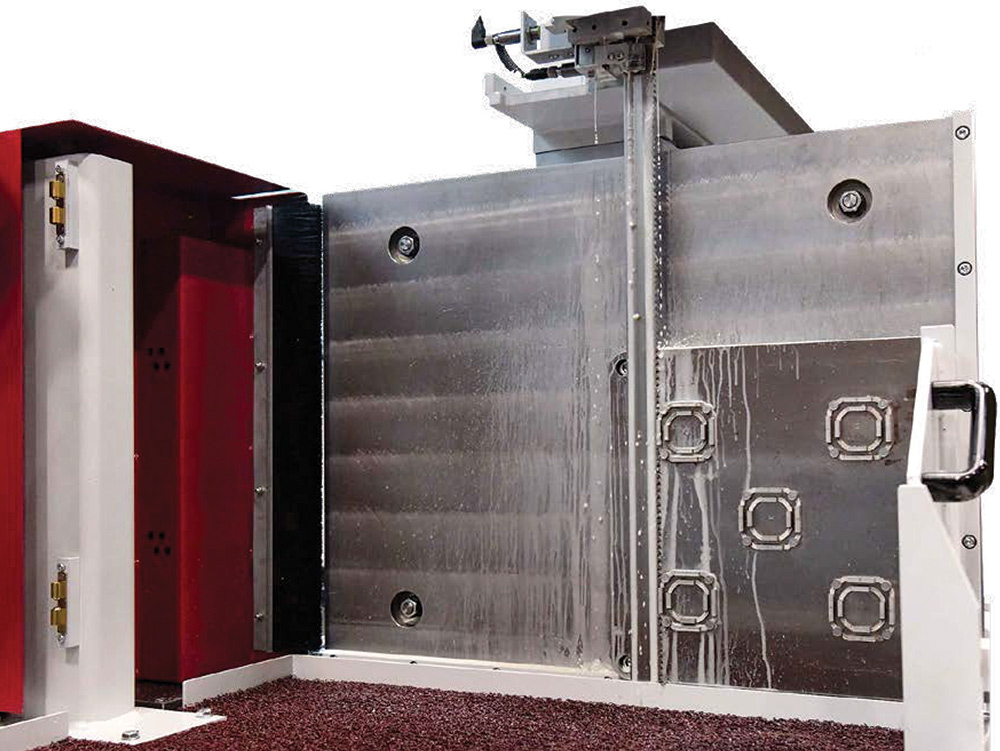Sawing
Band saws increase efficiency in additive manufacturing work cells
printing is now a crucial part of the development process for many manufacturers. In the aerospace industry alone, the market for 3D printing is forecast to grow from $1.9 billion in 2021 to $4.7 billion by 2026, a compound annual growth rate of 19.4 percent, according to research firm MarketsandMarkets. Shorter production timelines, reduced extraneous use of materials, more control over designs and increased resilience in supply chains are just a few of the reasons why 3D printing of metal parts has become so popular.

One process change can yield a wide variety of benefits for companies that regularly use 3D printing to craft metal parts and components: a shift from electrical discharge machining (EDM) to band saws for removing printed parts from base plates. While the specifics can change from one application to the next, band saws provide proven and substantial improvements over EDM.

Flexibility
EDM promotes efficiency in terms of the amount of material it removes, requiring a minimum of excess metal to separate the base plate and part. However, there are few advantages to be seen beyond this one area when compared to high-quality band saws designed for this specific purpose.
With a 3D-specific band saw, additive manufactured metal components can be removed from their base plates four to five times faster, regardless of the specific component design or the metal used. This means fewer base plates are needed, even as production increases. Multiple printers can also be serviced with one band saw, as opposed to a service ratio that can approach 1:1 with EDM machines. The lower capital and operating costs of band saws become even more valuable as production using 3D printing increases. Band saws provide a simple path to sustained savings, offering economical operations without a decrease in the quality of the cut or any other key performance metric.


- Capital investment: The cost of initially purchasing the band saw was only 40 percent of the price of an equivalently sized EDM machine.
- Consumables cost per cut: For band saws, consumables usage was about 2 percent of what had been measured previously when using EDM. These savings equated to roughly $75 per plate.
- Cut time: Sawing cut time dropped to 10 percent of what would be needed for EDM. Instead of requiring nine hours for part removal, parts can now be removed from their base plates in about 50 minutes.
- Material offset: Using band saws instead of EDM required additional material on the build plate, creating an additional cost. However, the many opportunities for savings meant this one increase was far outpaced by the sum of the benefits.
- Annualized savings: Taking all costs and savings into account, Behringer’s customer determined it saved $190 per plate, per use. In year one, annualized savings reached $320,000 with 1,600 plates processed.

 Maximizing the benefits of 3D printing generates a competitive advantage through cost and time savings.
Maximizing the benefits of 3D printing generates a competitive advantage through cost and time savings. 
Blade squareness—the ability of a blade to track square and true—is foundational in this regard. A heavy-duty, rigid machine allows for high blade tension that enables this key quality. Behringer’s heavy-duty design supports the head of the machine rigidly, enabling greater blade tension and beam strength. Additionally, the saws feature a ball-screw, servo-driven feed, which delivers precise feed rates and chip load, enhanced rigidity, blade tension and vibration dampening characteristics along with an elimination of blade deflection.
Band saws are functionally simple and have been proven to provide key benefits in this use case. EDM, meanwhile, provides equivalent outcomes in terms of cut quality but at a higher cost—and with more complicated operational needs. Manufacturing operations that want to optimize their operations, from both a cost and throughput perspective, have a clear choice.